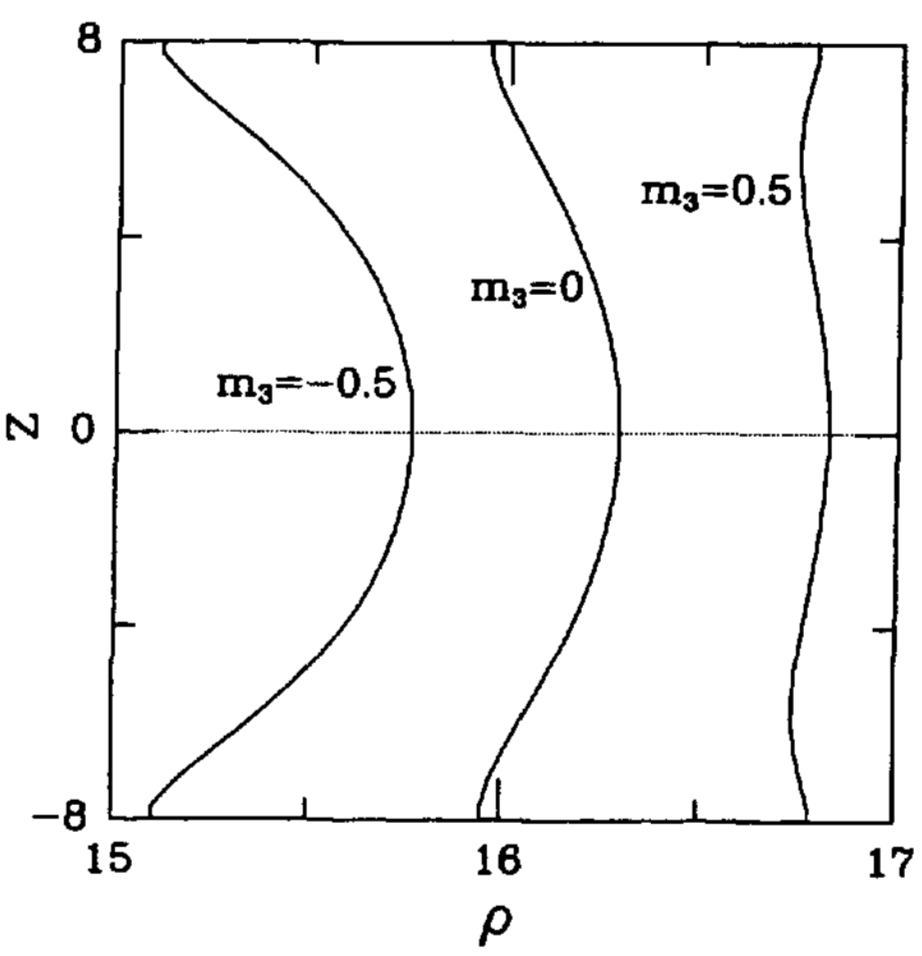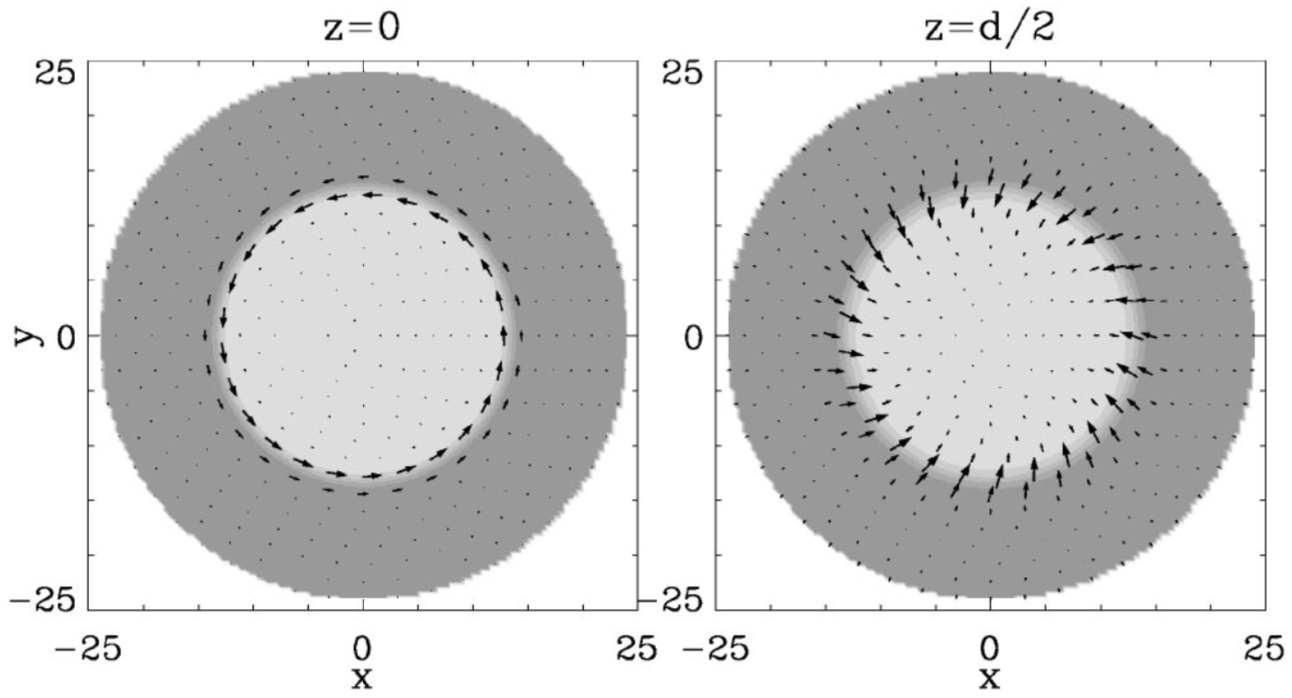Statics and dynamics
In the 60s and 70s magnetic bubbles were observed in ferromagnetic films with perpendicular anisotropy. These were observed as microscale cylindrical patches of reversed magnetisation and their study led to the technology of bubble memory. They were the first examples of what are called "topological magnetic solitons" in ferromagnetic films. Magnetic bubbles could be propagated in the film, and their dynamical (propagation) properties were recognised to be peculiar.
Magnetic bubbles in ferromagnetic films
Our earlier work [Physica D, 1996] was motivated by the extensive available data on the statics and dynamics of magnetic bubbles and it extended previous work. We studied the statics and dynamics of magnetic bubbles in a thin film. At the time, the subject was mostly of theoretical interest as bubble technology was not pursued any more. Currently, the issue of magnetic soliton dynamics in films, connected with the storing and transmission of information, is at the center of interest in the framework of an advanced incarnation of magnetic bubbles called magnetic skyrmions.
Magnetic patterns such as bubbles are called topological solitons because they carry a topological number called the skyrmion number. This plays a crucial role in their existence and stability. Bubble motion is counter-intuitive and completely contradicts what a naive application of Newtonian mechanics would imply. The surprising dynamics was linked to the bubble’s topological number.

The framework of our studies is set by the Landau-Lifshitz equation and they are both field-theoretical and numerical. We elaborate on a direct link between topology and dynamics for solitons that has been rigorously established. This was based on the construction of anumbiguous conservation laws for the linear and angular momentum of topological solitons, such as magnetic bubbles. The conservation laws are given as suitable moments of the topological density thus providing the link between topology and dynamics. We calculated numerically magnetic bubbles and studied their properties for the case of a ferromagnetic film, that is, in a three-dimensional model where the finite film thickness is considered. This requires to take into account the long-range magnetostatic field. We extended the theory for the dynamics of topological magnetic solitons within this setting. [Physica D, 1996].
Magnetic bubbles in particles

The fabrication of small magnetic elements or particles (since the 1990s) with sub-micrometer size raised the question of the existence of stable magnetic patterns in these meso-scale elements. We have theoretically predicted the existence of a single magnetic bubble in meso-scale ferromagnetic elements [PRB, 2005], [PRB, 2006]. This was followed by experimental observation in the technologically important FePt alloy [PRB, 2007]. These ideas have now been significantly expanded by the recently established experimental group of Dr Christoforos Moutafis (University of Manchester) in several publications including [Nature Physics 11, 225228 (2015)].